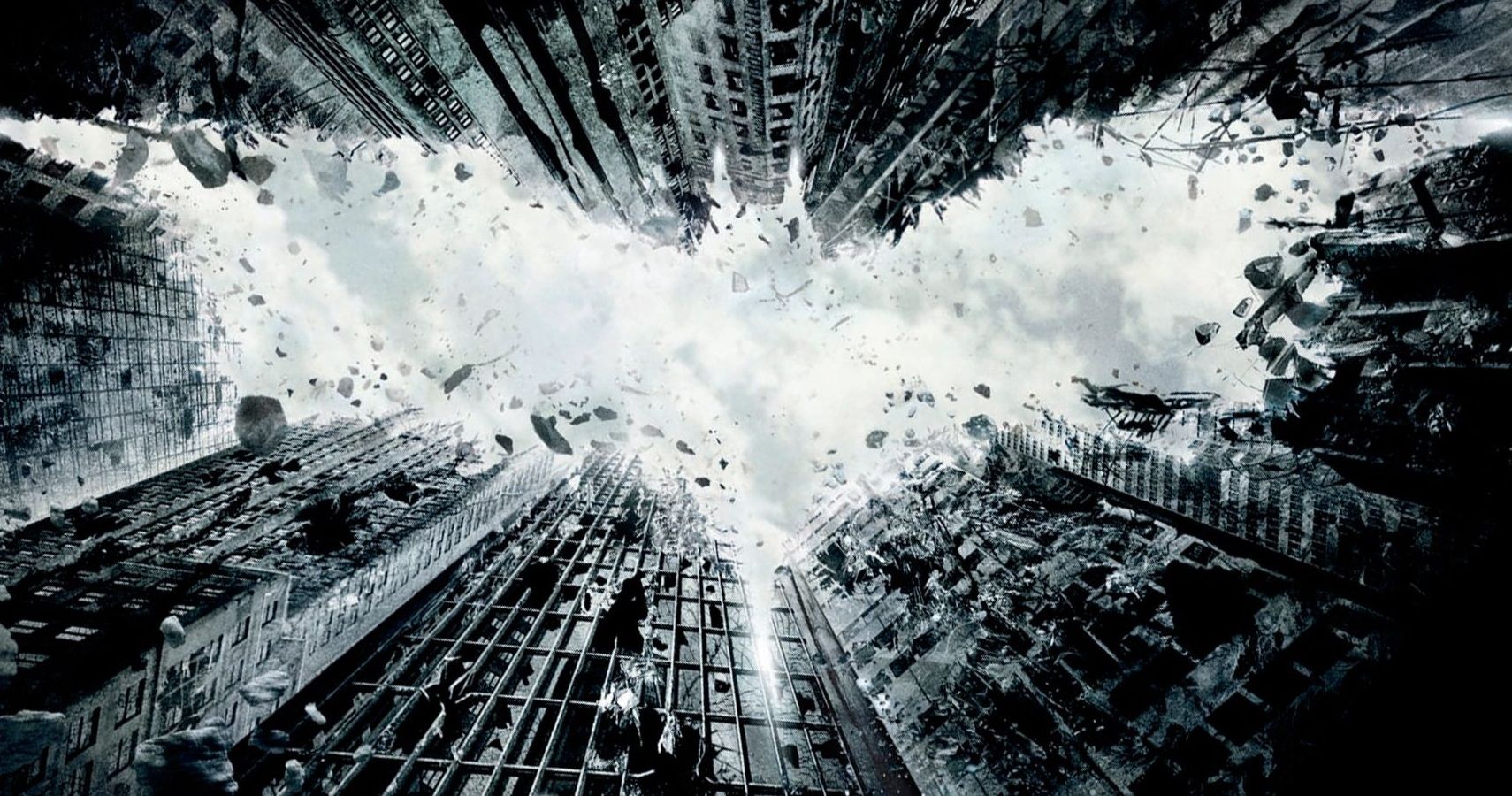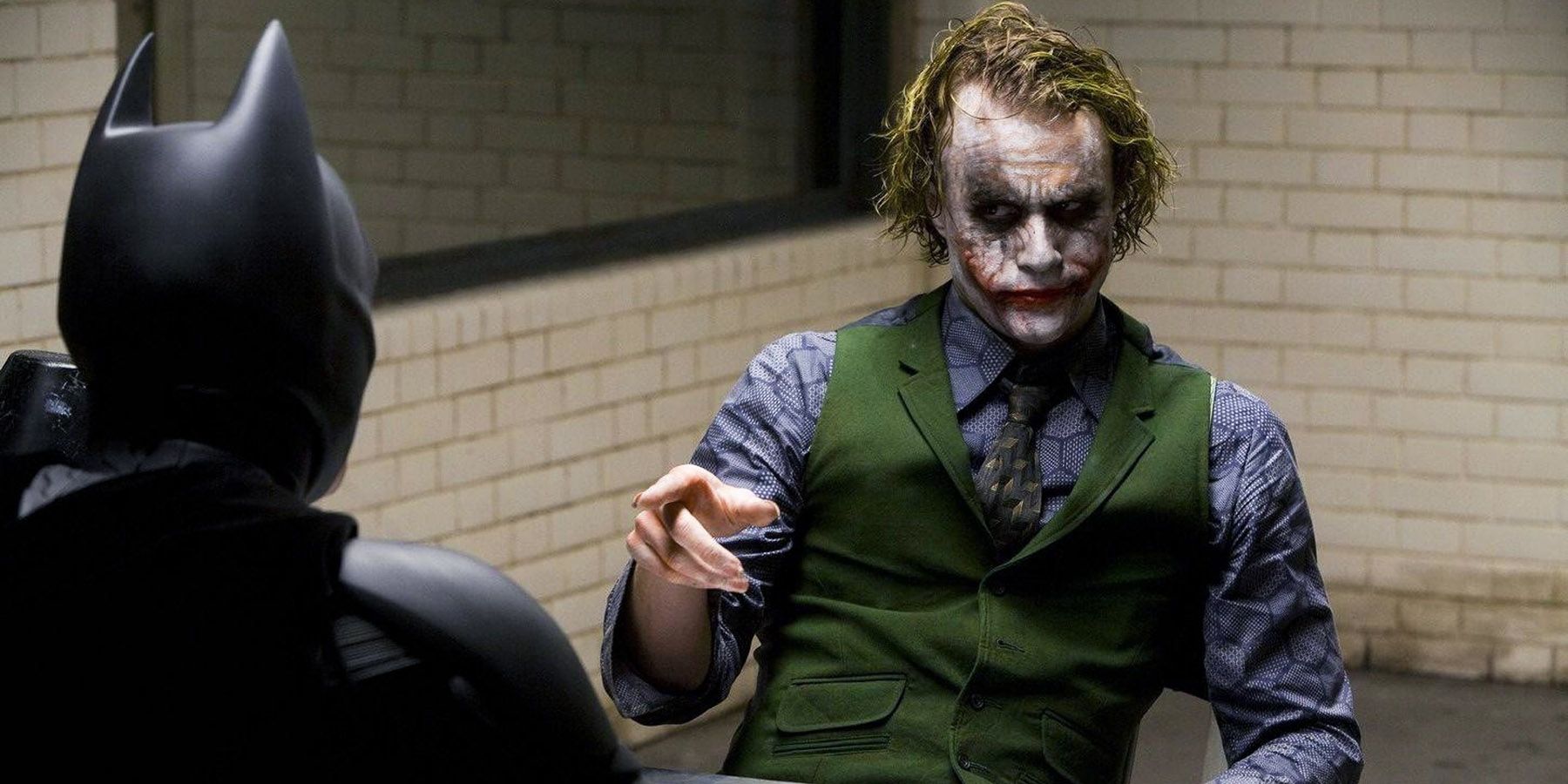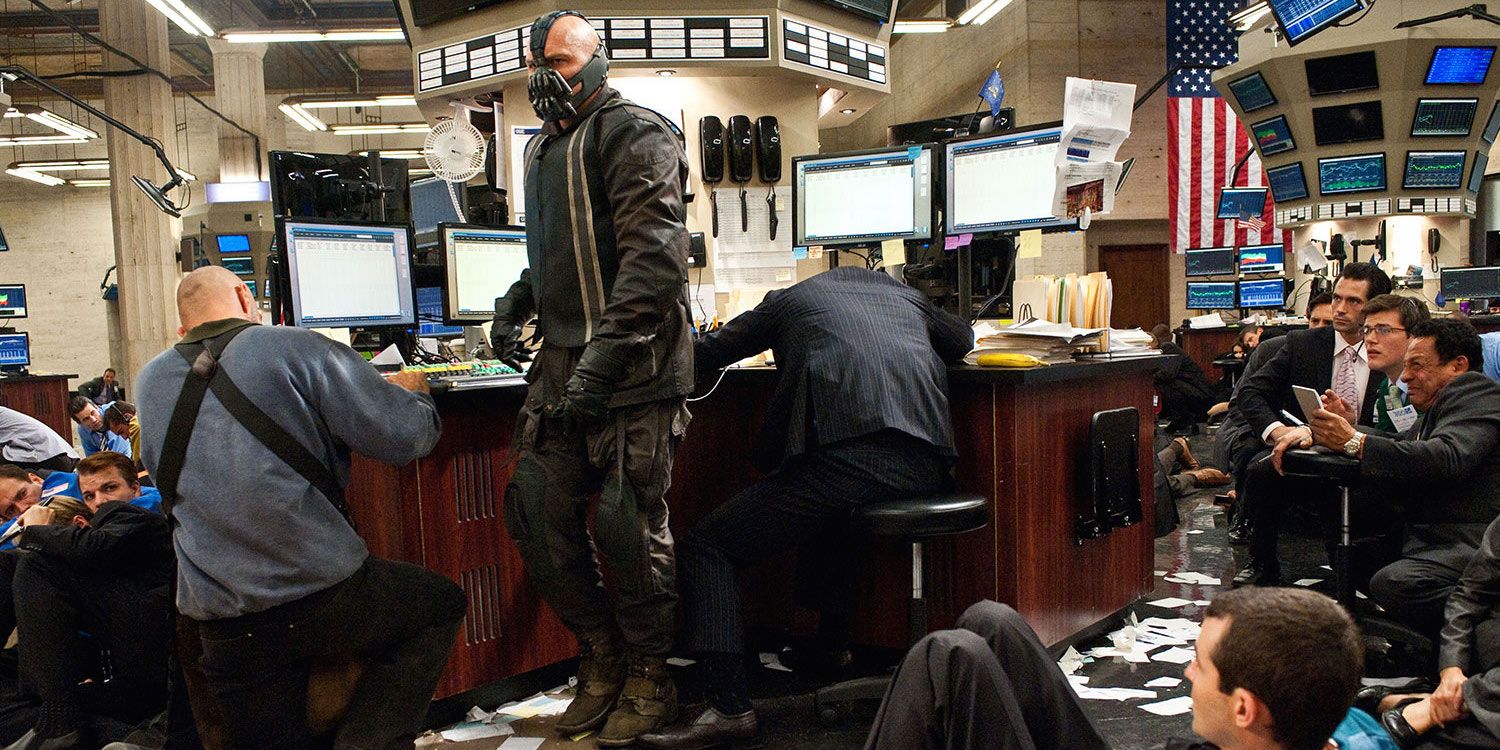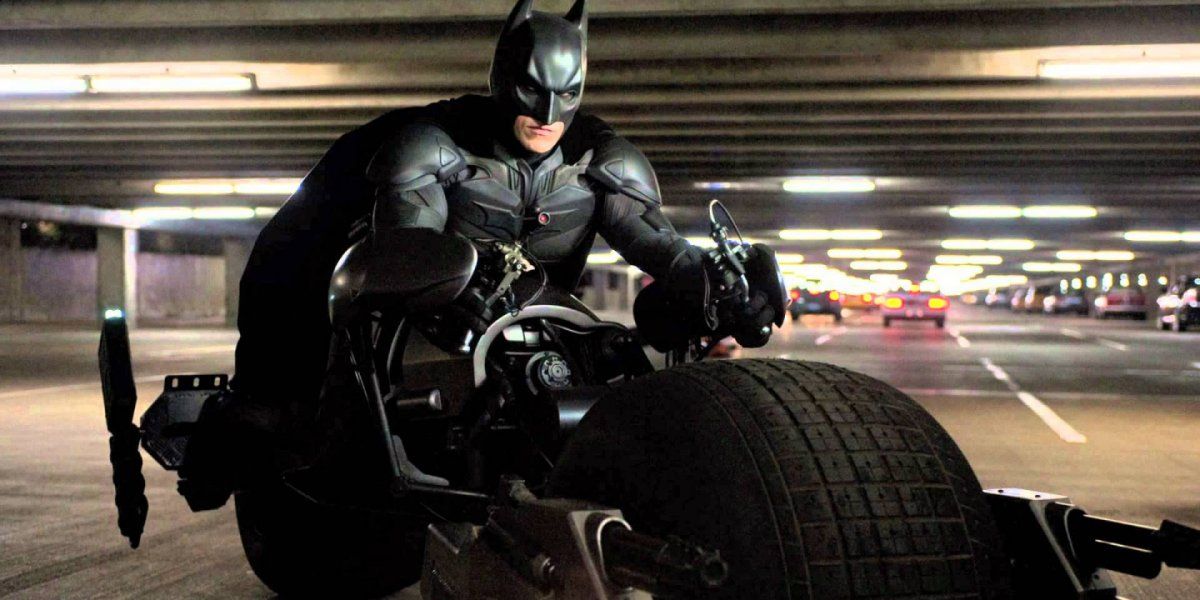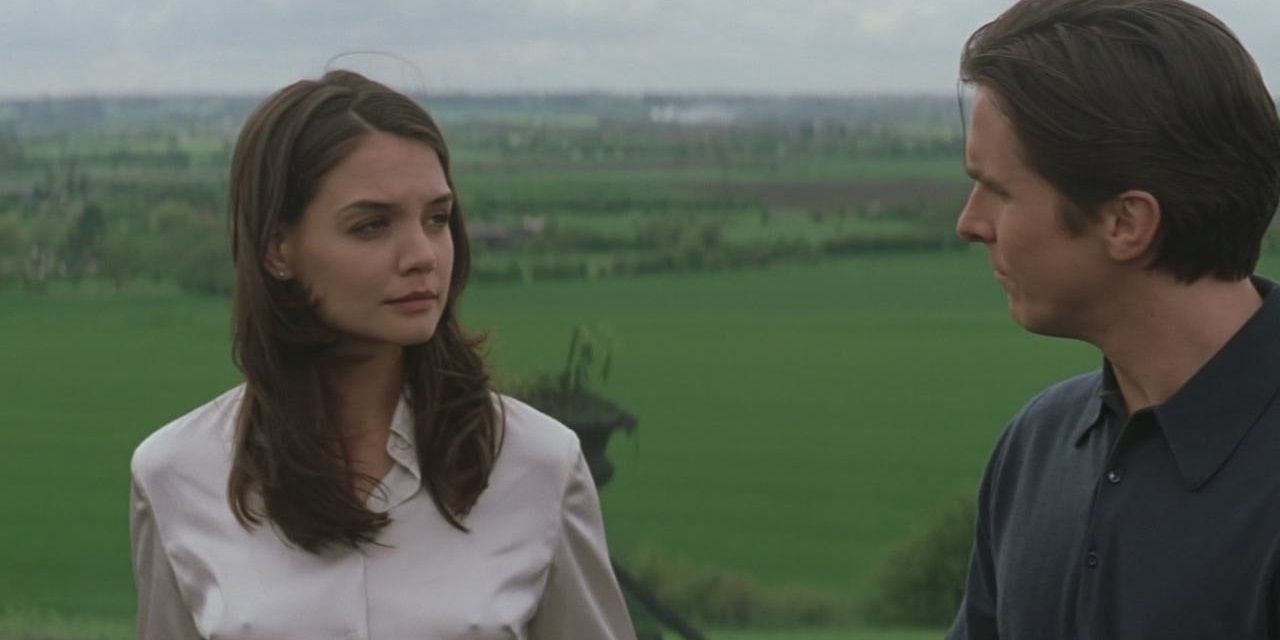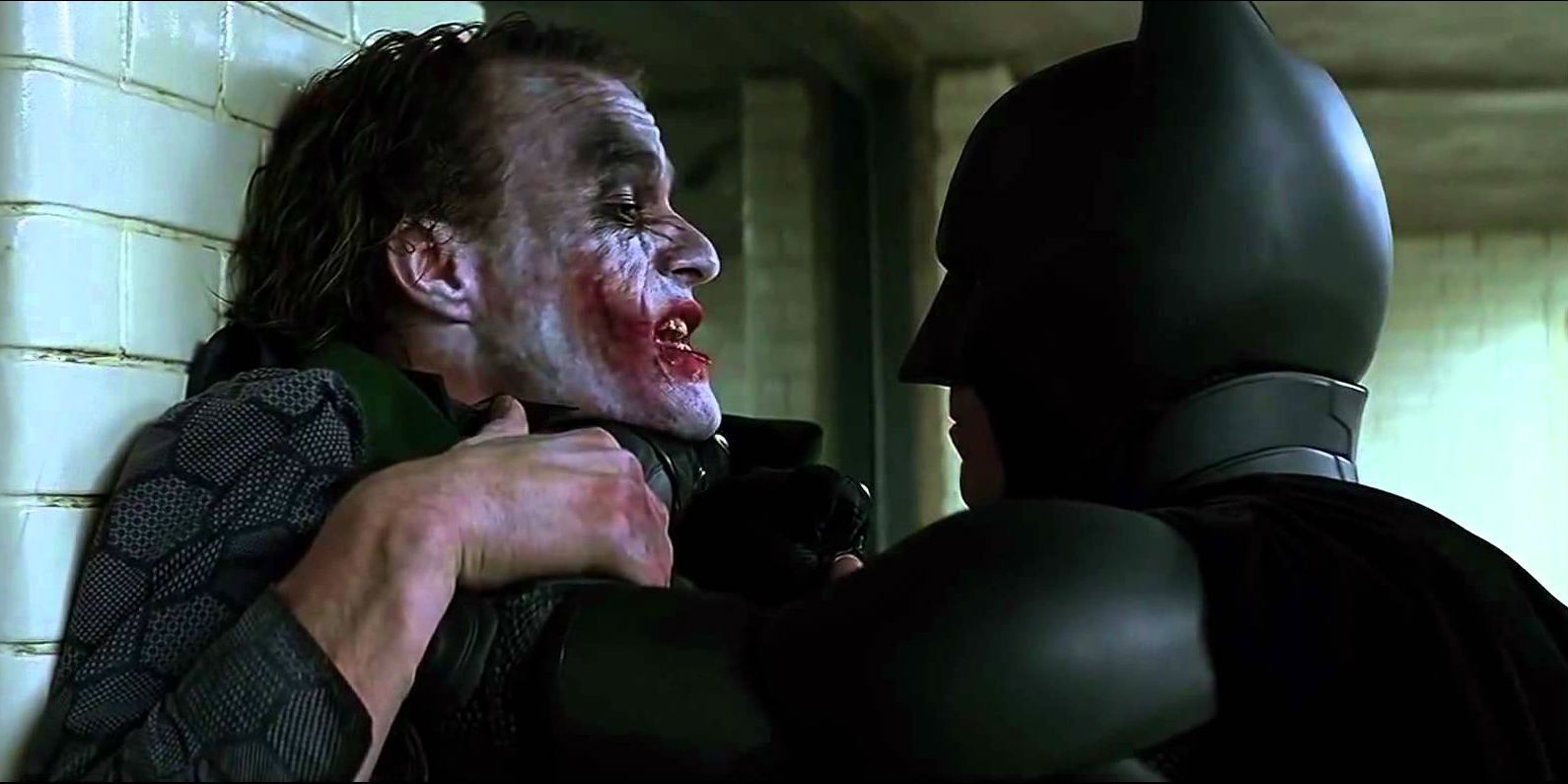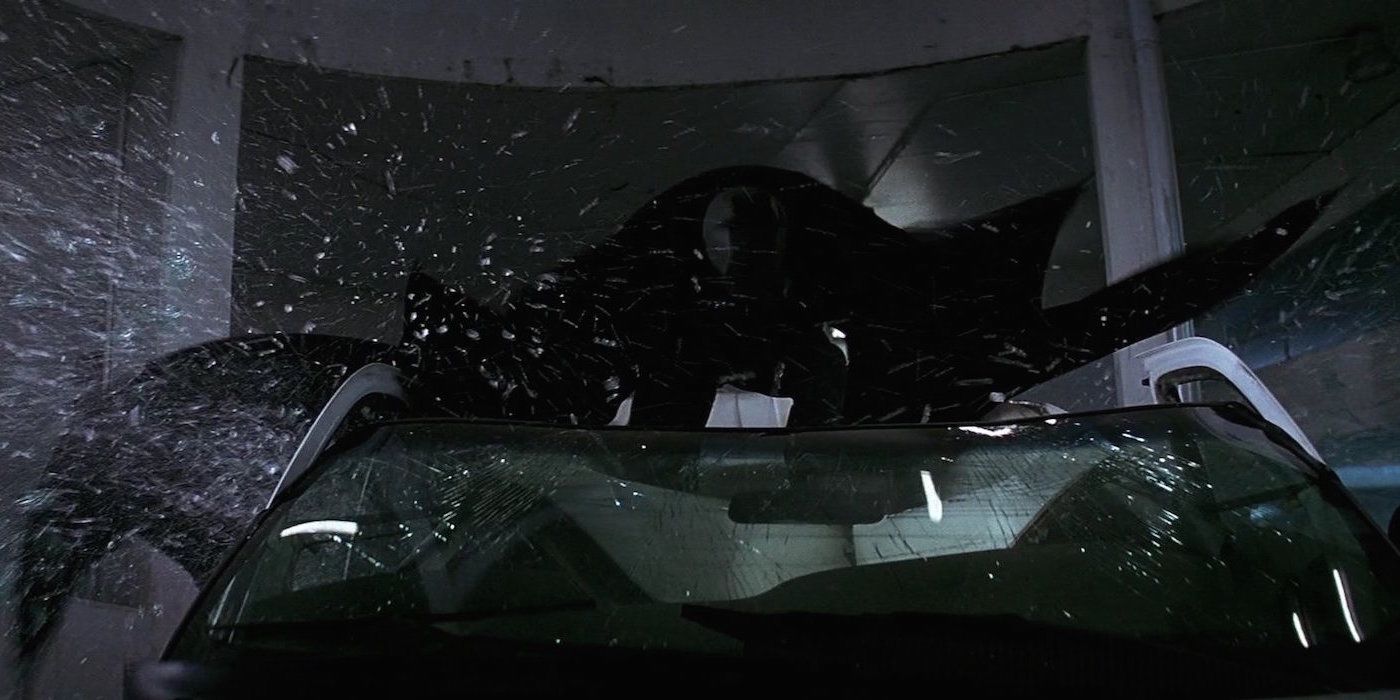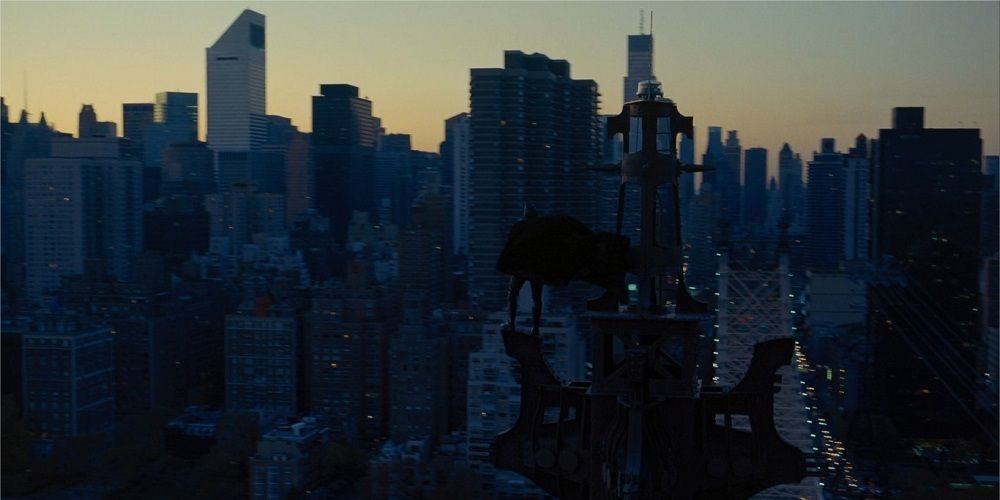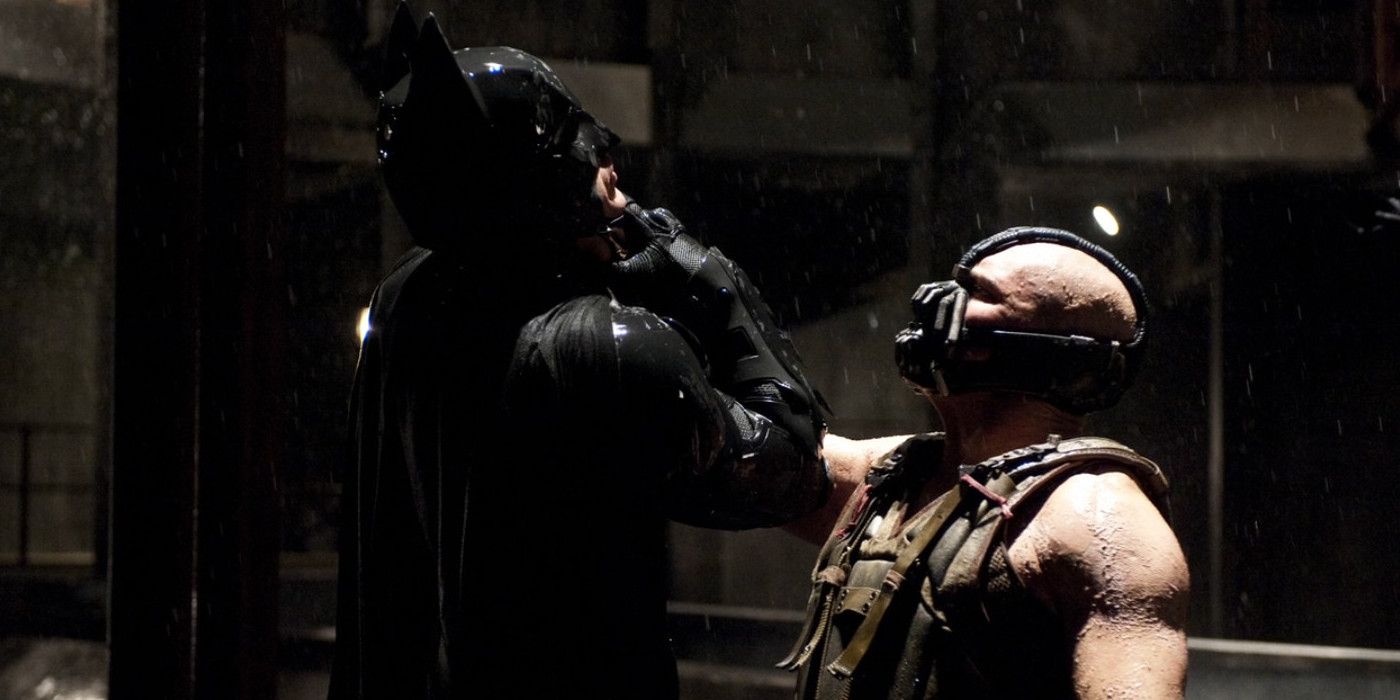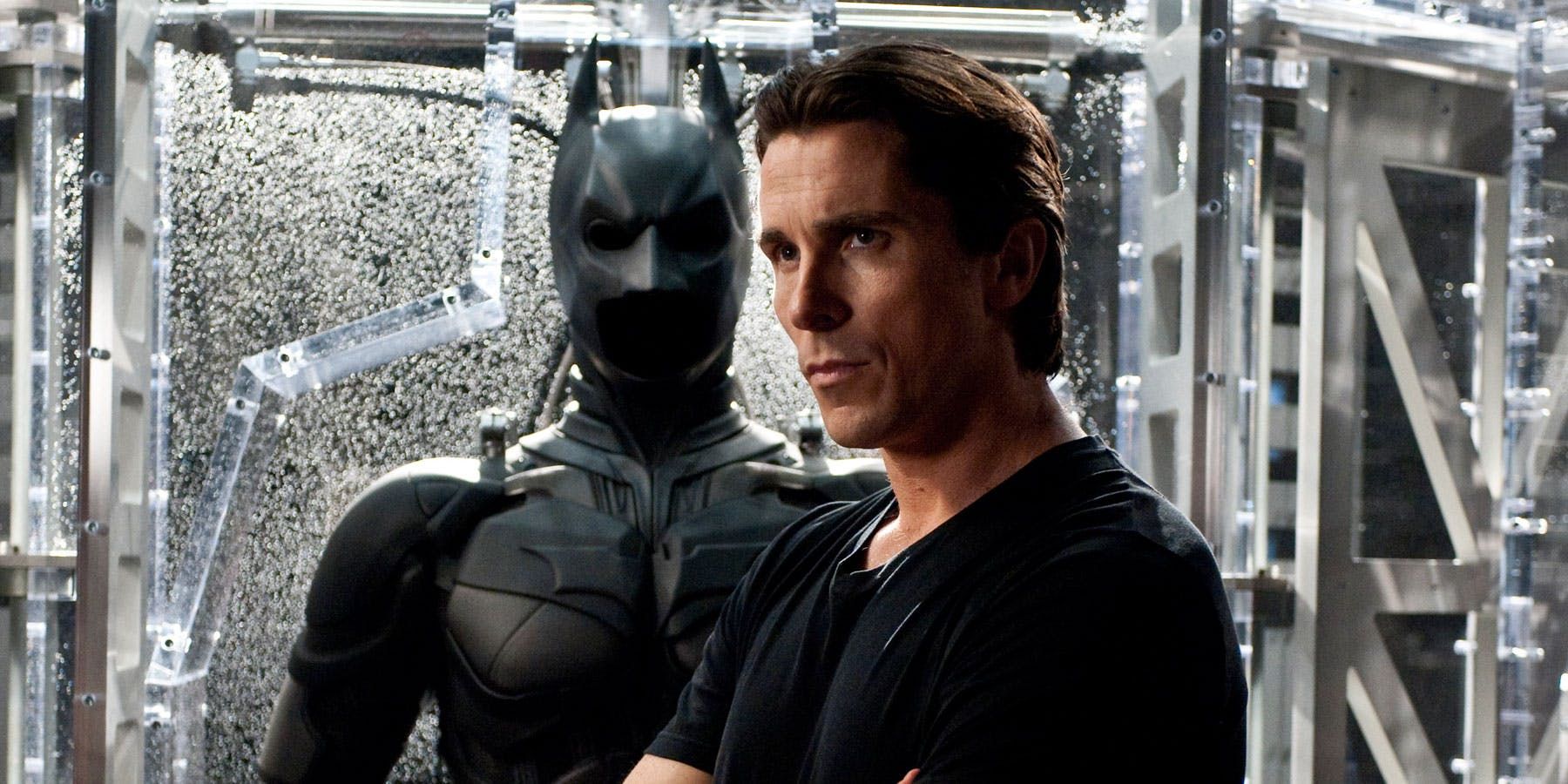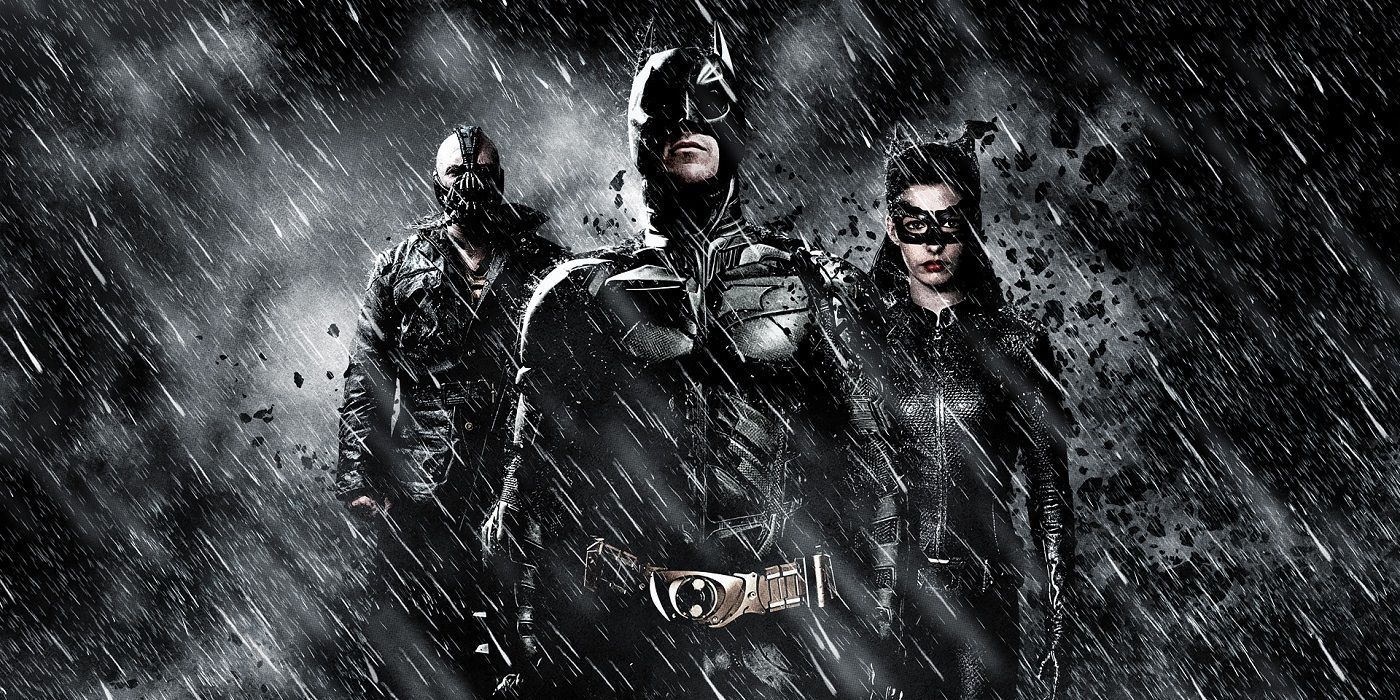With Batman Begins, The Dark Knight, and The Dark Knight Rises, Christopher Nolan gave us perhaps the most definitive on-screen portrayal of the Caped Crusader. The trilogy took us through Bruce Wayne’s origin story and his whole career as a superhero, concluding when he felt comfortable hanging up the cowl and passing on the torch of protecting Gotham to the next generation of heroes, all with a gritty, realistic tone exploring what a real-world Batman would look like. Of course, those movies weren’t perfect. So, here are 5 Things Christopher Nolan’s Batman Movies Got Right (& 5 They Got Wrong).
Right: Heath Ledger’s Joker
Right off the bat, the most obvious example of something that The Dark Knight trilogy nailed is Heath Ledger’s astounding, Oscar-winning portrayal of the Joker. Inspired by Alex DeLarge, Ledger’s Joker is disturbing — so disturbing, in fact, that some of his co-stars were genuinely terrified. Until earlier this year, there was no topping Ledger’s Joker. Joaquin Phoenix’s solo movie has some fans questioning that, but while Phoenix was incredible, Arthur Fleck doesn’t really feel like the Joker. He’s more of an original character. In terms of the Joker’s traditional comic book portrayal as an agent of chaos, the quintessential Batman foe, Ledger is still the gold standard.
Wrong: Convoluted villains’ plans
The villains’ plans in The Dark Knight trilogy are way too complicated. They’re so complicated that many of the steps are unnecessary. In Batman Begins, Ra’s al Ghul wants to plant the Scarecrow’s fear toxin in Gotham’s water supply and then vaporize the water to get it into the air, but we’ve seen that it already works as a gas, so there was no reason to vaporize it. In the following movies, the old cliché of “getting caught was all part of the plan” was used not once, but twice. And the S.E.C. clearly would’ve blocked the stock transfers that Bane forced at gunpoint from going through.
Right: Grounded tone
Batman isn’t an alien who shoots laser beams out of his eyes and he can’t run at superhuman speeds and he doesn’t have a ring that allows him to create anything in his imagination. He’s just a guy (well, not just a guy — he’s a billionaire socialite) who dresses like a bat and uses his hand-to-hand combat skills and advanced gadgets to beat up criminals. He doesn’t fight extraterrestrial invaders or Norse gods or planet-devouring cosmic overlords. He fights average, workaday thugs. So, Christopher Nolan had the right idea when he helmed The Dark Knight trilogy with a grounded, realistic, “What if Batman was real?” tone.
Wrong: Mundane romantic interests
The Batman films have always suffered from banal love interests — Vicki Vale, Chase Meridian, Elle Macpherson etc. — and sadly, Christopher Nolan’s films are guilty of this too. Rachel Dawes is a dull character because she’s been wholly designed as a foil for Bruce’s own character development, even getting “fridged” in The Dark Knight. The fact that Bruce Wayne sleeps with Talia al Ghul serves only to create a few plot holes, and what attracted them to each other is left unclear. In Batman’s cinematic history, the most compelling romantic interest has been Selina Kyle (both Michelle Pfeiffer and Anne Hathaway’s versions), but that’s not enough to save the trilogy.
Right: Social commentary
The deeper messages hidden in Christopher Nolan’s Dark Knight trilogy really resonated with audiences. Every major villain represents an ideological threat facing the United States — Ra’s al Ghul is the face of fascism, the Joker is the face of terrorism, and Bane is the face of communism (the 99% rising up and toppling the 1%) — and the trilogy as a whole explores the dissolution of social order.
But none of these are the root of the story. Ultimately, The Dark Knight trilogy is about striving to do the right thing and making the world a better place however you can, and that’s pretty inspiring.
Wrong: Choppy editing in action scenes
Christopher Nolan deserves some credit for gripping audiences with a series of superhero movies in which the action set pieces are possibly the least important thing. But the action is still a significant part of the trilogy, and its editing is rather choppy. The cuts are too fast to comprehend what’s going on. The fight between Bane and Batman (ending with the former breaking the latter’s back) should’ve been one of the most iconic moments in the trilogy — it’s one of the most iconic moments in the comics, so it was highly anticipated — but thanks to incoherent editing, it’s totally forgettable.
Right: Depiction of Gotham City
Christopher Nolan made Gotham City feel like a major character in The Dark Knight trilogy. Batman Begins built up a beautiful aesthetic for the city, establishing the stark class divide and key locations like the headquarters of Wayne Enterprises. Then, Nolan went above and beyond with his portrayal of the city in The Dark Knight, which was inspired by Michael Mann’s Heat and works as a study of the American city. From this point on, Nolan used Chicago as a filming location as Gotham’s more authentic stand-in. In The Dark Knight Rises, Nolan brought a full-on French Revolution to the streets of Gotham.
Wrong: Batman and Bane’s voices
Christian Bale did a fantastic job of playing Bruce Wayne and exploring his complicated relationship with the symbol of Batman. But actually playing Batman in the most aesthetic action sequences basically boils down to the voice, because the suit covers up every aspect of the actor besides their mouth, so all the audience gets is the voice.
Bale’s was so growly, and he mumbled so many of his lines that it was hard to understand a lot of what he said. The same thing happened with Tom Hardy’s portrayal of Bane in The Dark Knight Rises, in which the mask muffled his voice.
Right: Batman’s character arc
Throughout The Dark Knight trilogy, Batman follows a traditional hero’s journey. Christopher Nolan mapped out each beat in the Bat’s emotional and spiritual arcs perfectly. We meet Bruce Wayne as an orphan, tormented by his parents’ murder, and he decides to use his fear of bats to instill fear into the criminal underworld of Gotham. At the end of The Dark Knight, he has to come to terms with the fact that Batman isn’t Gotham’s hero, Harvey Dent is, and the Joker turned him into a murderer. To preserve Gotham’s hope, Batman has to take the fall for the killings. In The Dark Knight Rises, Bruce has to learn to let go of his fears and move on emotionally, eventually hanging up the cowl (or sacrificing himself, depending on your reading of the ending).
Wrong: Overstuffing The Dark Knight Rises
While it functions as a much more satisfying conclusion to its story than Spider-Man 3, The Dark Knight Rises suffers from a few of the same problems, and the main problem is being overstuffed. Like Spider-Man 3, The Dark Knight Rises has too many villains crammed into it (Bane, Catwoman, Talia al Ghul — even Ra’s al Ghul and the Scarecrow are jammed into the plot) and far too much story (Nolan posed it as a comic book-y take on Charles Dickens’ A Tale of Two Cities). In response to pressures to make the sequel to The Dark Knight even bigger, Nolan may have made it too big. Sometimes, less is more.

